To be able to navigate this website in an accessible way, a series of web accessibility tools have been programmed:
Reading Optimization
A responsive website is one that adapts to different screen sizes, for example, both for reading on a computer and from a mobile device. The screen adapts and the menus change from horizontal to vertical for correct display and functionality.
Audio Guide
The audio guide allows you to select and listen to any text on the web page. It is activated when we place the mouse cursor over some clickable element such as a menu or links, or when an entire text is selected.
Voice Control
Voice control allows you to access different pages and interact in other ways with the web page using your voice and the use of a microphone, without the need for a computer keyboard or mouse function.
The list of voice shortcuts that have been programmed is as follows:
Contrast
Increase
- Increase font
- Reduce font
- Bigger
- Smaller
- Increase size
- Reduce size
Audio guide
- Start menu
- Next page
- Previous page
- News
- Update
- To read
- Stop reading
To access the different pages of the web map you will need to say the %22name of the page%22.
Contrast
The contrast tool darkens the screen and lightens the text in order to increase the contrast and make it easier to read the content of the page.
Zoom
Within the zoom tool, you can enlarge or reduce the content of the page.
CANCEL
With this tool, we can return all the values set on the original default page. In other words, undo all the changes we have made on the web: zoom, contrast…etc.
Gentis accessible
The website of the Gentis Foundation www.gentis.org is being updated periodically with accessibility criteria. The indexing and tagging of all planes, as well as their URLs and media library elements, is currently being reviewed. This year, in addition, Easy Reading guidelines are introduced in the writing of blog articles, as well as the incorporation of descriptions in all multimedia material.
We will continue to work on the different accessibility barriers taking into account the Web Content Accessibility Guidelines 2.0 (WCAG 2.0), at its Double A level, established by the W3C (World Wide Web Consortium).
